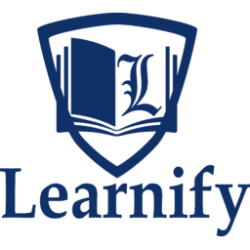Workplace Inspection Techniques Training Course
Introduction
Workplace inspections are an essential part of any health, safety, and environmental (HSE) management system. This course focuses on equipping participants with the skills and techniques required to conduct thorough and effective workplace inspections. Participants will learn to identify hazards, evaluate risks, and implement corrective actions, ensuring a safer and more compliant working environment. This course incorporates modern tools, methodologies, and industry best practices to prepare participants for the challenges of today’s dynamic workplaces.
Course Objectives
By the end of this course, participants will:
- Understand the importance and role of workplace inspections in safety management.
- Learn various inspection techniques and methodologies.
- Develop the ability to identify hazards, assess risks, and prioritize corrective actions.
- Master the use of inspection checklists and reporting tools.
- Understand regulatory requirements and standards related to workplace inspections.
- Gain knowledge on how to integrate inspection findings into continuous safety improvement programs.
Who Should Attend?
This course is ideal for:
- Safety managers and HSE professionals
- Risk management professionals
- Supervisors and team leaders in charge of workplace safety
- Maintenance personnel and facility managers
- Occupational health and safety officers
- Compliance officers and auditors
- Consultants and trainers in safety management
Advanced 5-Day Course Outline
Day 1: Introduction to Workplace Inspections
Session 1: The Role and Importance of Workplace Inspections
- Understanding the purpose and benefits of regular inspections
- Impact on workplace safety, productivity, and regulatory compliance
Session 2: Key Inspection Standards and Guidelines
- Overview of OSHA, ISO 45001, and other relevant standards
- Practical session: Reviewing the most common standards used in workplace inspections
Session 3: Types of Inspections
- Routine inspections vs. specialized inspections (e.g., hazard-specific, emergency preparedness)
- Practical session: Identifying the right type of inspection for different environments
Day 2: Inspection Techniques and Methodologies
Session 1: Inspection Techniques Overview
- Visual inspections, walkthroughs, interviews, and documentation review
- How to spot hidden hazards using different inspection methods
Session 2: Hazard Identification and Risk Assessment
- Techniques for identifying potential hazards (e.g., physical, chemical, ergonomic, etc.)
- Assessing risk based on the likelihood and severity of hazards
Session 3: Tools and Equipment for Effective Inspections
- Overview of inspection tools: checklists, mobile apps, and digital platforms
- Practical session: Using mobile inspection tools to assess a sample workplace
Day 3: Conducting the Workplace Inspection
Session 1: Preparing for an Inspection
- Planning the inspection process: scope, objectives, and team formation
- Understanding the importance of pre-inspection data gathering (e.g., injury records, equipment maintenance logs)
Session 2: On-Site Inspection Procedures
- Conducting a walkthrough: how to examine different areas systematically
- Engaging employees in the process through interviews and observation
Session 3: Common Hazards in Various Workplaces
- Identifying workplace hazards in sectors like construction, manufacturing, healthcare, and office environments
- Practical session: Identifying hazards in a sample scenario
Day 4: Reporting and Follow-Up Actions
Session 1: Documenting Inspection Findings
- Creating detailed inspection reports and ensuring clear, actionable documentation
- Key elements of a good inspection report: hazard identification, risk assessment, and recommendations
Session 2: Corrective Actions and Risk Control
- Prioritizing corrective actions based on the severity of risks
- Best practices for implementing effective corrective actions and preventive measures
Session 3: Post-Inspection Communication
- Reporting to management and other stakeholders
- Ensuring feedback loops and accountability for corrective actions
Day 5: Continuous Improvement and Advanced Techniques
Session 1: Integrating Inspections into Safety Programs
- How to align inspection results with broader safety goals and organizational improvement plans
- Developing a culture of safety through regular, comprehensive inspections
Session 2: Leveraging Technology for Inspections
- Digital inspection tools, AI, and remote inspection techniques
- Practical session: Exploring software solutions for automating inspection processes
Session 3: Analyzing and Improving Inspection Effectiveness
- Evaluating the impact of inspections on overall safety performance
- Group activity: Creating a strategy for enhancing future inspections based on lessons learned
Conclusion and Next Steps
- Certification of completion
- Access to inspection templates, checklists, and digital tool recommendations
- Networking with safety professionals and industry experts

